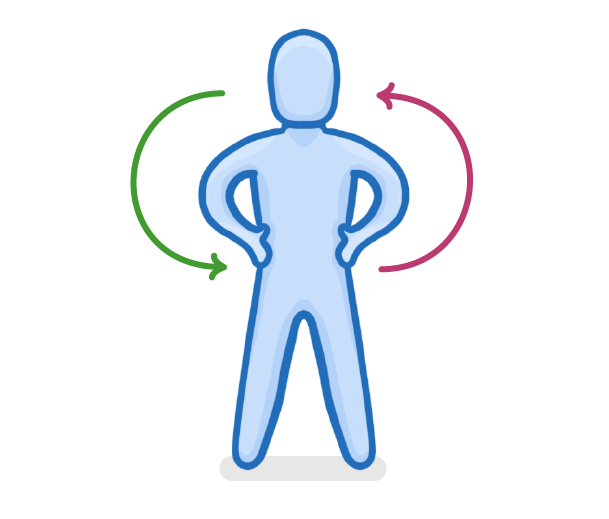Homeostasis
This lesson covers:
- What 'homeostasis' is
- The roles of receptors, coordination centres, and effectors
- The differences between the nervous system and the endocrine system
- What we mean by 'negative feedback'
What is homeostasis?
Maintaining a constant external environment
Maintaining a stable internal environment despite changing conditions
Changing an internal environment within the body
|
Why does the body need to maintain optimal conditions?
For slow enzyme action and cell function
For optimal enzyme action and cell function
To kill pathogens
|
Which of these are considered 'internal conditions'?
(Select all that apply)
Room temperature
Blood glucose concentration
Blood pH
|
True or false? Homeostasis ensure internal conditions stay exactly constant, they don't fluctuate at all.
True
False
|
Which of these are considered 'external conditions'?
(Select all that apply)
Blood oxygen concentration
The amount of fluids you drink
Room temperature
|
effector / receptor
Homeostasis relies on automatic control systems.
In what order are signals passed along the control system?
➔ coordination centre ➔
|
What is the role of a receptor?
Interprets changes and organises a response
Detects changes in the internal or external environment
Carries out the response
|
What is the role of a coordination centre?
Carries out the response
Interprets changes and organises a response
Detects changes in the internal or external environment
|
Where are the coordination centres located in the body?
(Select all that apply)
Brain
Muscles
Spinal cord
Skin
|
Name the two types of effectors and state what they do.
|
Is the nervous system or the endocrine system faster acting?
Nervous
Endocrine
|
Which system acts more generally across the body, the nervous system or the endocrine system?
Endocrine
Nervous
|
Homeostasis relies on a system of , meaning whenever the levels of something get too high they're brought back down, and whenever the levels of something get too low, they're brought back up.
|
If our body temperature gets too high, negative feedback will cause our temperature to:
It won't do anything
Decrease back down
Increase further
|

How does negative feedback work?
Any change in a system causes an action that amplifies the change
Any change in a system causes an action that reverses the change
Stops any changes from taking place
|